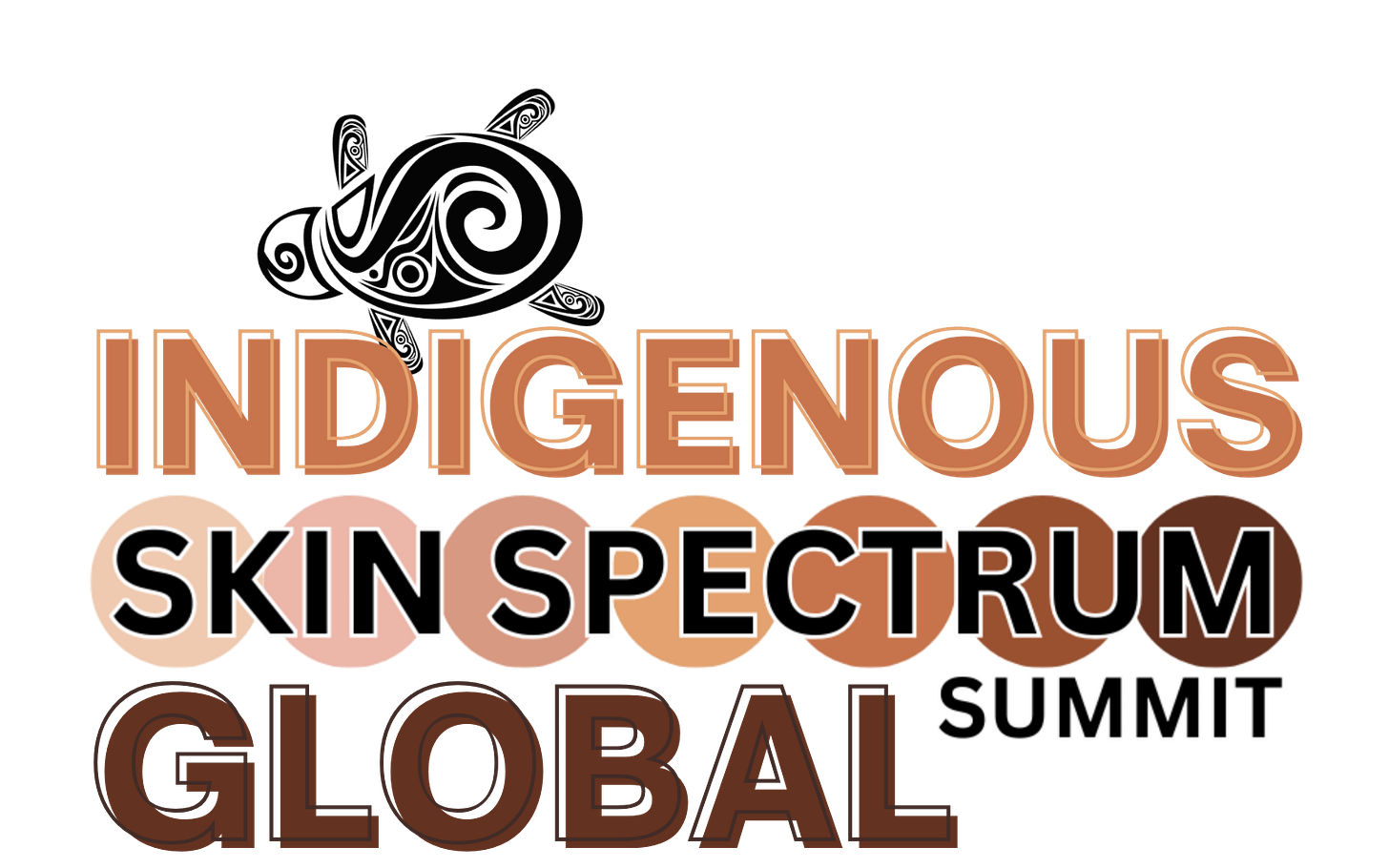New periprocedural skincare algorithm detailed
Guidance for improving SOC patients’ comfort and outcomes from nonenergy and nonablative energy procedures (Issue #237, 1,400 words, 7 minutes)
An international team of dermatologists has developed an algorithm for periprocedural skincare for nonenergy and nonablative energy-based facial aesthetic procedures in patients with skin of colour (SOC).
An open-access paper published in the Journal of Cosmetic Dermatology (Jan. 2025; 24(1):e16712) describes the algorithm and its development. Eight dermatologists from Brazil, Canada (Dr. Renée A. Beach, Toronto, and Dr. Monica Li, Vancouver), South Africa, Mexico, and the U.S. participated in a meeting and an online follow-up to develop the algorithm. The authors used a Delphi method to create this algorithm and integrate information from the literature with the panels' clinical experience and opinion, resulting in the current algorithm.
The algorithm divides periprocedural skincare into five sections.
Medical history and skin examination
Pretreatment measures beginning two to four weeks before the procedure
Measures on the day of the procedure
Aftercare one to seven days after the procedure
Follow-up care one to four weeks after the procedure and ongoing
“Integrating periprocedural skincare for facial nonenergy and nonablative energy-based procedures in patients with SOC is beneficial as it enhances treatment outcomes and patient experience and may reduce downtime,” the authors write.
They also note that educating clinicians and patients on suitable skincare and providing samples for patients to test cosmetic acceptability and preference may enable an informed choice and avoid disappointment among patients.
Bottom line: A new algorithm represents a stepwise process for optimal periprocedural skin care in patients with SOC who undergo facial aesthetic procedures with injections, nonenergy, and nonablative energy procedures. Periprocedural integrated skin care may help improve treatment outcomes in SOC patients.
From the literature on aesthetic dermatology in skin of colour
Skin of colour representation in cosmetic dermatology literature, 2018-2023
For this study, researchers examined skin of colour (SOC) cosmetic research in five dermatology journals. They screened articles from Lasers in Surgery and Medicine, Journal of Cosmetic Dermatology, Cosmetics, Lasers in Medical Science, and Clinical, Cosmetic, and Investigational Dermatology published between Sept. 2018 and Sept. 2023 for cosmetic interventions on SOC. They defined this as studies with more than 50% non-Caucasian patients. A total of 561 papers met inclusion criteria, and 214 provided Fitzpatrick Skin Type (FST) data.
Investigators found FST III (40.74%) and IV (40.53%) were the most represented. East Asian (57.75%) and Middle Eastern-North African (24.06%) ethnicities were most represented, with most research from East Asia (56.15%). The authors note SOC articles often lacked specific FST details, were focused on hair issues, and mainly came from predominantly Caucasian countries.
They conclude there is a significant underrepresentation of SOC in cosmetic dermatology research, with a bias toward FSTs III, IV and East Asian populations.
Lip augmentation in patients with Fitzpatrick skin type V and VI: Use of a validated lip fullness scale and determining preinjection lip size preference and postinjection patient satisfaction
Investigators measured preinjection lip augmentation preferences and postinjection satisfaction using the revised Lip Fullness Scale (LFS) in female participants with Fitzpatrick Skin Type (FST) V and VI.
They recruited 22 females, aged 21 years and older, with FST V and VI who desired lip augmentation from a high-volume outpatient facial plastic surgery clinic. Researchers administered the LFS scale pre- and postinjection and the FACE-Q patient-reported outcomes scales postinjection.
The average patient age was 33.2 years (SD=8.1). Of those, 14 were FST V, and eight were FST VI. The average preinjection self-assessment LFS was 3.5. The final average postinjection self-assessment LFS score was 4.3. Researchers found the increase in final postinjection LFS scores was statistically significant with a p-value <0.001 compared to preinjection LFS scores. Patients reported high satisfaction on postinjection FACE-Q.
The authors conclude that patients with darker skin may prefer marked to very marked lip fullness. They write that physicians should be conscientious in understanding patients' individual perspectives and aesthetic goals.
Facial skin quality improvement after treatment with CPM-HA20G: Clinical experience in Korea
Researchers evaluated the effectiveness and safety of intradermal injection with CPM-HA20G, a low-viscoelasticity hyaluronic acid (HA) dermal filler with glycerol, in enhancing facial skin quality in Korean women.
The authors note that CPM-HA20G has been shown to be effective for facial rejuvenation in Caucasians, but research in Asians is limited.
In this 24-week prospective, single-arm, open-label study, physicians provided CPM-HA20G injections in 20 women in the immediate subdermal layer on the anterior cheek (1 mL per side; total 2 mL) in three sessions every four weeks. Evaluations included biophysical assessments covering the four emergent perceptual categories (EPCs) for skin quality and subjective assessment using the Global Aesthetic Improvement Scale.
Investigators observed significant improvements in skin glow (skin gloss, epidermal hydration), skin firmness (dermal elasticity, dermal hydration), skin surface evenness (average pore volume, pore area, pore density, pore count, maximum pore depth, total pore volume, skin roughness, sebum secretion, and skin depression volume), skin tone evenness (skin colour brightness, skin redness), and transepidermal water loss at Week 12 and Week 24 following the first injection with CPM-HA20G. Most subjects and investigators reported improvements in overall aesthetic appearance with the treatment, with a 100% improvement rating from both groups at Week 12. Investigators observed no serious adverse reactions.
At the intersection of skin and society
On Feb. 27, 2025, Chief Dwayne Laboucan, the elected Council of Driftpile Cree Nation, and the Honourable Patty Hajdu, Federal Minister of Indigenous Services, signed a service delivery agreement affirming Driftpile Cree Nation's inherent right to self-governance over its children, youth, and families.
According to a press release from Indigenous Services Canada, this agreement supports the implementation of Driftpile Cree Nation's Mihtatakaw Sîpiy Awasak Wiyasiwêwin (Driftpile River Children's Law), using the framework provided by An Act respecting First Nations, Inuit and Métis children, youth and families.
This agreement honours Driftpile Cree Nation's jurisdiction over the delivery of programs and services required for the safety and well-being of their children and families.
Driftpile Cree Nation, through its Children's Lodge, the Chief Kinosêw Awasak Mîkiwâhp (CKAM), will deliver holistic prevention, protection, and support services for young adults to all of its approximately 3,237 members living in Driftpile Cree Nation and across Alberta. Signing the agreement is a collaborative effort rooted in the shared understanding that their Nation's children will thrive within their families, community, and culture.
As part of the agreement, Canada will provide $16.4M in base funding annually over the coming four years, adjusted annually based on inflation and population growth. In addition, Canada is contributing funding for facilities to support the new child and family services program. In the absence of funding from Alberta, Canada will also provide funding for 24 months to support children who do not reside in Driftpile Cree Nation.
Supported by this agreement, Driftpile Cree Nation will commence its work on March 17, 2025, to implement its Law along with a new, customary program and service delivery model that was developed collaboratively with members and will be carried out by CKAM.
"Family is at the heart of Driftpile Cree Nation. We embrace and endorse our journey to implementing Mihtatakaw Sipiy Awasak Wiyasiwewin and asserting our inherent Rights respecting our children, youth, and families in a profound way,” Chief Laboucan said in the release. “We will provide our own services—designed and developed by us, and for us—that put families first and ensure that our children are always connected to their families, language, culture, and community. This historic effort is about honouring our families, near and far, as guided by our Ancestors since time immemorial."
This week
March 11 is Canadian Women Physician’s Day
March 13 is National Dermatologist Day in the U.S.
March 15 is International Day to Combat Islamophobia
Something to think about in the week ahead . . .
—Lisa Ling, U.S. journalist (1973 to present)
Next week
A new Canadian Delphi consensus provides guidance on optimizing the management of psoriasis in patients with skin of colour.
Less than one month to the first Global Indigenous Skin Spectrum Summit in Montreal
Early bird registration pricing is still available to Skin Spectrum Weekly readers for the first Indigenous Skin Spectrum Global Summit, which will be held in Montreal on April 5, 2025.
The summit will allow attendees to learn more about the unique dermatologic challenges facing Indigenous, rural, and circumpolar populations worldwide. Experts worldwide will provide insights on how physicians can support equitable health for these populations.
Summit chair Dr. Rachel Asiniwasis (Regina) leads a world-renowned faculty that includes Dr. Rachel Pugh (Australia), Dr. Carsten Sauer Mikkelson (Denmark), Dr. Monique Mackenzie (New Zealand), Dr. Anna Chacon (Florida), Dr. Carolyn Jack (Montreal), and other thought leaders.
More details on the Global Summit are at this link.
If you enjoy Skin Spectrum Weekly, why not check out the Chronicle’s other publications, podcasts, and portal?
Established in 1995, The Chronicle of Skin & Allergy is a scientific newspaper providing news and information on practical therapeutics and clinical progress in dermatologic medicine. The latest issue features:
Drs. Ilya Shoimer (Calgary), Michael Stevens (Bedford, NS.), and Mark Lupin (Victoria, BC) discuss the current strategies for managing actinic keratoses, including identifying the risk of progression to squamous cell carcinoma.
Dr. Irina Turchin (Fredericton, NB) describes findings from recent research on the safety and efficacy of topical roflumilast 0.3% in treating psoriasis.
Drs. Yuka Asai (Kingston, Ont.), Benjamin Barankin (Toronto), Fiona Lovegrove (London, Ont.), and Sam Hanna (Toronto) review some of the significant dermatologic treatment approvals of 2024.
Plus regular features, including the popular column “Vender on Psoriasis” by dermatologist Dr. Ron Vender.
You can read a recent digital edition of The Chronicle of Skin & Allergy here. To apply for a complimentary subscription or to request a sample copy, please email health@chronicle.org with your contact information.
The Women in Dermatology e-newsletter updates readers with new findings concerning dermatologic issues affecting women and the female dermatologists who care for them. Read the current issue here.
Season three of the Vender on Psoriasis podcast with Dr. Ron Vender has begun. Listen to the new season here. In episode five, Dr. Vender discusses whether vitamin D influences psoriasis severity, sex differences in psoriatic inflammation itch, and the risk of psychiatric disorders associated with acitretin.
And if you’re looking for a web destination for all things derm, visit derm.city, “Where Dermatology Lives.” Please like, rate, review, and share it with your colleagues.
You are receiving this newsletter because you subscribe to The Chronicle of Skin & Allergy or another Chronicle journal, have attended a Skin Spectrum Summit live event or webinar, or have previously requested a subscription to one of our newsletters. If you no longer wish to subscribe to this newsletter, please email the subject line “Unsubscribe Skin Spectrum Weekly” to health@chronicle.org.
Skin Spectrum Weekly is published by Chronicle Companies, 701 Ellicott Street, Buffalo, NY 14203. Canada: 1460 The Queensway, Suite 212, Toronto, Ont. M8Z 1S4
Mitchell Shannon, Publisher; R. Allan Ryan, Editorial Director; John Evans, Managing Editor; Jeremy Visser, Editor; Cristela Tello Ruiz, Client Services; Joyce Pitters-Hinds, Client Experience Associate; Shannon Abbott, Associate Conference Organizer
Content is copyright (c) 2025, Chronicle LifeSci America Corp, except as indicated. Interested in contributing to this newsletter or learning more about Chronicle’s services? Please write to us at info@skinspectrum.us
Skin Spectrum Weekly is a reader-supported publication. To receive new posts and support my work, consider becoming a free or paid subscriber.








